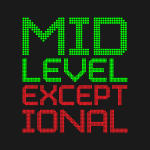Iman Shumpert, Cap Holds and Extensions
Ian Begley of ESPNNewYork reported over the weekend that the New York Knicks and Iman Shumpert had not had any contact over this summer about a possible extension.
This issue arises because the NBA needed to answer a very important question: In a league with a soft cap, how do we handle players that were under contract last season but are not right now?
Players under contract are easy since they already have a number to plug into the salary table. The league needed a way to handle these types of free agents because any wrong tact would lead to certain teams taking advantage of those rules. Even with a pretty good system, this can still happen in situations where teams ask players to wait to sign to fulfill this same concept.
In the case of Iman Shumpert, this becomes an issue of a cap hold. Article VII, Section 4(d) of the Collective Bargaining Agreement specifies how “Free Agent Amounts” work. Mark Deeks of ShamSports does an excellent job working through all of the possibilities if you want to read more but I can give you my shorthand version of how to do it:
Question One: Was the player on a rookie scale contract last season? If so, the rules are different for them whether they finished out the contract (like Iman Shumpert at the end of the coming season if, as is expected, he and the Knicks do not agree on an extension) or had an option year or two declined (like Jimmer Fredette). I should also note that only first round picks can sign rookie scale contracts so players like Chandler Parsons immediately went to question two even though their first NBA deal was four years long like a rookie scale contract.
Question Two: If the player was not playing on a rookie scale contract, what kind of free agent are they? The CBA specifies different formulas for calculating cap holds for each class of free agent- non-Bird players have a hold at 120% of their salary from the last season, 130% for Earl Bird players, and full Bird free agents have a hold at 190% of their previous salary if they made less than the average salary (while not exactly on point, I use the Mid-Level Exception amount as a guideline) and 150% if they made more than that. Another important detail is that no player’s cap hold can be more than his maximum salary, so unless the cap absolutely explodes teams will not get any benefit from holding off on re-signing someone already on a max contract to another max contract. This will presumably affect the Cavs with LeBron James at some point.
Back to the rookie scale guys. If the teams decline either of the options (3rd season and 4th season of rookie scale contracts), the player’s cap hold, that player’s cap hold is simply what they would have been paid had the team not declined the option. Incidentally, in those cases the cap hold is also the player’s maximum salary with that team- a system put in place so franchises could not game the system by declining a young player’s contract and giving him an early big money extension.
If we are dealing with players who are finishing out their four-year rookie scale deal, we again compare the salary from their final season on that contract to the average salary. While only the highest picks get above the average salary in their fourth year since rookie scale contracts are low, those few players have a cap hold at 200% (double) their fourth season salary. The vast majority of players in this situation have a cap hold at a whopping 250% of their fourth season salary.
Now, 250% looks like a big increase but remember that rookie contracts are mostly pretty inexpensive. Iman Shumpert provides an excellent example of this. In the final season of his rookie scale contract, Shumpert will make $2,616,975, substantially less than the average salary. Even a 250% bump puts his cap hold at a manageable $6,542,438.
That number takes the place of Shumpert’s salary on the books of the team that has him until he signs a new contract and his actual salary replaces the cap hold. In cases where a player has a meaningfully lower cap hold than their expected (or even agreed upon) salary, teams with cap space will try to have the player wait to sign their contract so they can use the space that will evaporate once the contract amount replaces the cap hold.
The Knicks appear to be working from an assumption that they will have cap space to play with next season. As such, any contract Iman Shumpert agrees to now that pays him more than $6,542,438 in the first year cuts into what New York can do next summer. Since Shumpert likely wants more than that amount for his first-year salary and the Knicks have the right to match any offer sheet he signs in 2015 if they make him a qualifying offer, holding off on signing him to an extension makes the most sense assuming they value that difference in cap space more than eliminating the risk that he signs a much larger contract next summer than he would agree to right now. Stephen Curry’s extension perfectly illustrates this risk- the Warriors would have been paying Curry substantially more if they had waited until after his wildly successful fourth season to set his price. The Knicks have plenty of incentive to wait for July 2015 to re-sign Shumpert but they also are taking some risk in doing so.


